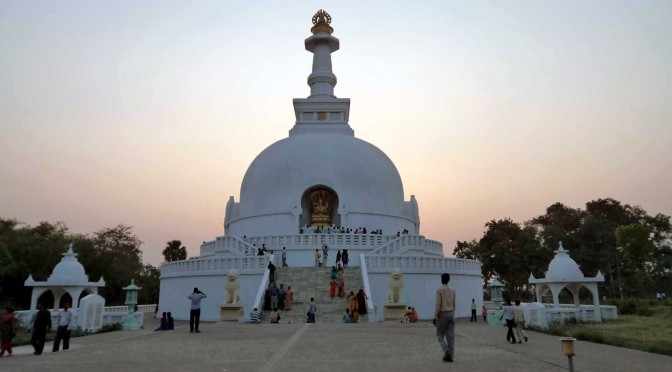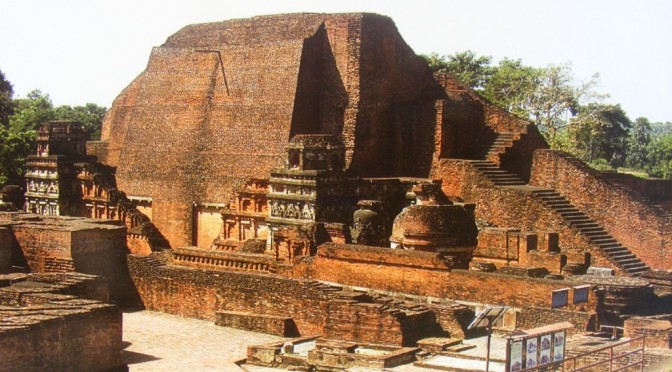Vaishali district is a district in Bihar state, India. It is named after theVaishali (ancient city). The history of Vaishali district is thus very ancient, and finds mention in the Indian classic Mahabharata, as well as inBuddhist and Jain tradition. It is a part of the Tirhut Division (Tirhut).
Category Archives: Nearby Places
Bodh Gaya,Vaishali,Nalanda,kesariya etc.
Kesaria
One of the famous Buddhists sites, Kesaria in the East Champaran district of Bihar is home to one of the most striking architectural remains of ancient India. Discovered in 1958 during an excavation led by Archaeologist KK Muhammed of Archaeological Survey of India (ASI). The stupa dates to between 200 AD and 750 AD.
The colossal Buddhist Stupa, excavated here in 1958 and 1998 by The Archaeological Survey of India (ASI), is hailed as the largest in the world.
With a height of 104 feet and circumference of almost 1400 feet, this imposing structure is larger than the Borobudur sputa in Indonesia. Located in a serene ambience, the Kesaria stupa is a testimony to the greatness of the ancient Buddhist architecture and stands out as a worthy emblem of a great religion. – See more at: http://www.incredibleindia.org
Nalanda
Nalanda (Nālandā; pronunciation: /nɑː.lən.ðɑː/; ) was an acclaimed Mahāvihāra, a large Buddhistmonastery in ancient Magadha (modern-day Bihar), India. The site is located about 95 kilometres southeast of Patna, and was a centre of learning from the fifth century CE to c. 1200 CE.Historians often characterize Nalanda as a university.
Nalanda flourished under the patronage of the Gupta Empire as well as emperors like Harsha and later, the rulers of the Pala Empire. At its peak, the school attracted scholars and students from as far away as Tibet, China, Korea, and Central Asia. It was very likely ransacked and destroyed by an army of the Muslim Mamluk Dynasty under Bakhtiyar Khilji in c. 1200 CE
Bodh Gaya
Gaya (/ɡʌjɑː/) (Hindi: गया) is a city of ancient historical and mythological significance. It is one of the major tourist attractions of Bihar. The city is the second largest city of Bihar[2] and also the headquarters of Gaya District.
Gaya is 100 kilometers south of Patna, the capital city of Bihar and 230 km from Bhagalpur. Situated on the banks of the Phalgu River (or Niranjana, as mentioned in Ramayana), it is a place sanctified by the Jain, Hindu and Buddhist religions. It is surrounded by small rocky hills (Mangla-Gauri, Shringa-Sthan,Ram-Shila and Brahmayoni) by three sides and the river flowing on the fourth (eastern) side. The city has a mix of natural surroundings, age old buildings and narrow bylanes.



